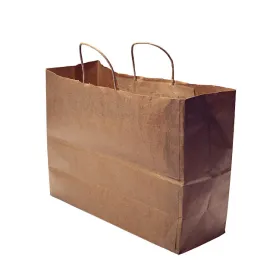The Trans Pacific Partnership agreement (“TPP”), the largest regional free trade and investment agreement that has ever been negotiated, was signed by the United States and eleven other countries in the Asia Pacific region (i.e., Australia, Brunei, Canada, Chile, Japan, Malaysia, Mexico, New Zealand, Peru, Singapore, and, Vietnam.). The signatory countries will have a maximum period of two (2) years in which to implement the TPP into their respective local laws. What does this mean for U.S. retailers, distributors, and manufacturers? For starters, the TPP will eliminate import tariffs on more than 18,000 goods, many of which are currently subject to high duty rates. U.S. companies will enjoy significant duty-savings opportunities on imports of qualifying goods into the United States, and U.S. exporters will likely find their goods in greater demand by foreign buyers located in TPP countries. The Obama Administration has also touted the TPP as a means for supporting higher paying jobs in the United States, growing the U.S. economy, and countering China’s economic expansion.
With respect to the implementation of the TPP in the United States, President Obama notified Congress of his intent to enter the TPP, and signed the agreement with the other signatory countries on February 4, 2016. On November 17, 2015, the U.S. International Trade Commission (“ITC”) announced its intent to commence an investigation on the likely economic impact of the TPP on the United States—such investigations are a routine part of the international agreement implementation process, and Congress typically will not vote on any implementing legislation until the ITC’s report has been released. On May 18, 2016, the ITC released its report and found that by Year 15 of the TPP, if enacted, the agreement would have small but positive effects on the U.S. economy, such as:
-
0.23% increase in U.S. annual real income;
-
0.15% increase in the GDP;
-
0.07% increase in U.S. employment levels;
-
18.7% increase in U.S. exports to TPP partner countries;
-
10.4% increase in U.S. imports from TPP partner countries;
-
0.5% gain for the U.S. agriculture and food industries;
-
Gain of $442.3 billion in output for the U.S. services sector;
-
0.1% decrease in output for the U.S. manufacturing, natural resources, and energy sectors;
-
Increase in cross-border trade in services and benefits for small and large U.S. companies;
-
Strengthened and harmonized trade-related regulations; and,
-
Decrease in trade costs for firms that trade and invest in the TPP region.
In light of the upcoming Presidential election at the end of 2016, there will likely be additional delays in the TPP’s implementation. Even after its implementation into U.S. law, the agreement itself will enter into force only after at least six of the signatory companies (that represent a minimum of 85% of the GDP of all of the participants) have implemented the agreement into their local laws. Thus, the TPP may not go into force until sometime in 2017 or later.
If the TPP ultimately takes effect, retailers, manufacturers and distributors will need to know how to make the most of the TPP to boost their bottom lines and those of their foreign customers. As noted previously, customs duties on more than 18,000 products imported into the United States and other signatory countries will be eliminated under the TPP; however, only goods that are considered to be “originating” in a TPP member country will be afforded such preferential tariff treatment. There are three ways in which a good may qualify for TPP treatment under the agreement—the goods must be:
(a) wholly obtained or produced entirely in the TPP territory;
(b) produced entirely from TPP-originating materials; or,
(c) in full compliance with product-specific rules of origin.
The agreement also provides a de minimis rule that will allow imported products containing non-originating materials to qualify for the TPP—even if they don’t otherwise satisfy the agreement’s product-specific rules of origin. Originating goods must also be shipped directly from one member country to another without passing through the territory of a non-party in order to qualify for the TPP.
Once the agreement goes into force, companies in TPP member countries may claim duty-free treatment on imports of TPP-originating goods. Claims for duty-free treatment may be made at the time of entry provided that the importer has in its possession a certification signed by the producer or exporter of the goods attesting that the merchandise is TPP-originating. There will be no specified form that must be used for these certifications; however, they must contain certain data elements relating to the producer, exporter, importer and the products themselves. In addition, both importers and exporters utilizing the TPP must maintain records (i.e., certifications and supporting documentation substantiating that the products qualify for TPP treatment) for a period of five (5) years from the date of importation or date of execution of the certification. It is important for U.S. exporters that will be selling TPP-qualifying goods to understand the TPP process, as qualifying products will become highly attractive to foreign buyers in TPP member countries.
At this stage, it is still too early to predict when the agreement will actually go into effect. However, it is a good idea for companies to begin thinking about how the TPP may impact their operations, and whether it could be used for greater duty and cost savings (for themselves or for their foreign buyers) in the future.



 />i
/>i

